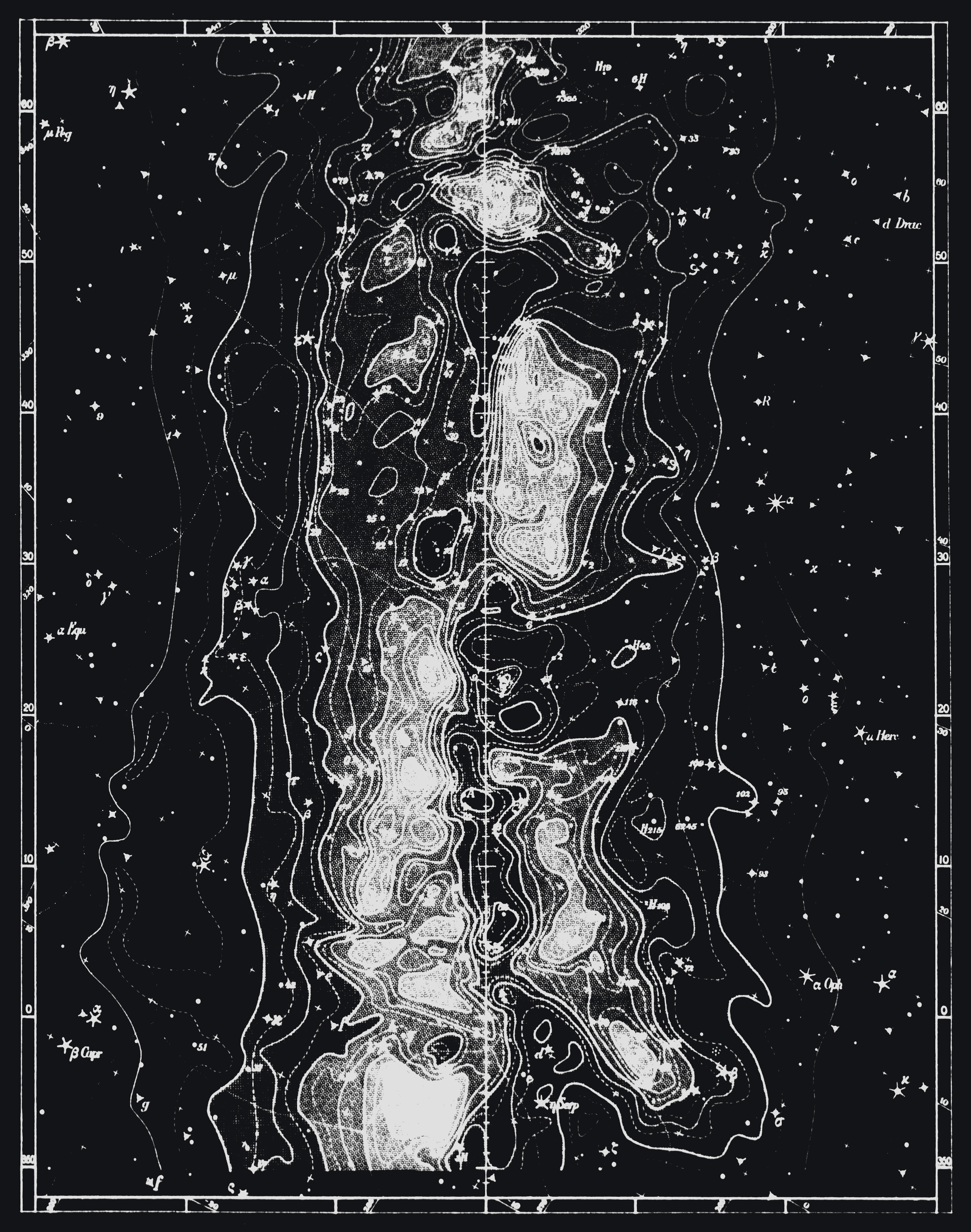
A ‘Mean Subjective Image’ of the northern Milky Way produced by Marxist Astronomer Anton Pannekoek’s averaging of several isophotic maps, some drawn based upon the perspectives of other celestial cartographers.
Umberto Eco’s On the Impossibility of Drawing a Map of the Empire on a Scale of 1 to 1, a tongue-in-cheek assessment of the cartographic proposition in Jorge Luis Borges’ On Exactitude in Science, presents what he calls The Paradox of the Normal Map and three accompanying corollaries. To contextualize the argument, Borges’ story, written as an excerpt from the travelogues of one Suarez Miranda, describes an Empire whose Cartographers Guilds produced a Map of the Empire with complete fidelity, on a scale of 1:1, which eventually decayed into fragments scattered about the desert.
Eco’s Paradox, proposed after laying out some necessary characteristics of the Map of the Empire, suggests that once “the map is installed over all the territory” it alters the territory in such a way that the Map becomes inaccurate. And so a New Map is necessary, which takes into consideration the presence of the one prior - a process that repeats infinitely. Thus, the Final Map - since it cannot contain itself - necessarily fails to portray the territory of the Empire. This is the First Corollary: the 1:1 Map “always reproduces the territory unfaithfully.”
The Second Corollary is that the Final Map renders the Empire unreproducible “at the moment [it] is realized.” Attempts to reproduce the Empire either take into consideration the Final Map - which produces a New Final Map that falls prey to the First Corollary - or they ignore the Final Map which makes them likewise inaccurate.
Before addressing the Third Corollary, a summary of Jean Baudrillard’s analysis of Borges’ Map is warranted. In The Precession of Simulacra, the first chapter of Simulacra and Simulation, Baudrillard describes the Map of the Empire as quaint compared to contemporary abstraction: nowadays, “The territory no longer precedes the map, nor does it survive it. It is nevertheless the map that precedes the territory […] today it is the territory whose shreds rot across the extent of the map.”
The Third Corollary follows the revelation that the Empire, while becoming imperceptible to other empires on account of the Second Corollary, has also become imperceptible to itself. The only escape comes in the form of “transcendental apperception of [the Empire’s] own categorical apparatus in action” - that is to say, the Map’s own development of a pure sense of self: a situation that Eco says would transform the Map into the Empire, which would have ceded all of its power. Hence, the Third Corollary:
“Every 1:1 map decrees the end of the empire as such and therefore is the map of a territory that is not an empire.”
Eco and Baudrillard arrive at the same position: the Map becomes the agent of change, the Empire’s “vestiges persist here and there” in “the desert of the real itself.” The Map moves from representing the territory, to becoming indistinguishable from the territory, to, with the Final Map, autonomously premising the territory. But where Baudrillard claims a paradigmatic shift in abstraction that obsoletes Borges’ account of cartography, Eco, from some assumptions about the Map of the Empire, demonstrates that Baudrillard’s “[substitution of] the signs of the real for the real” also arises from great ambition within the paradigm of simple representation. This potentiality for the annihilation of territorial content and the preeminence of the Map itself has always existed within all forms of cartography.
The purpose of this website is to write from the anticartographic perspective.